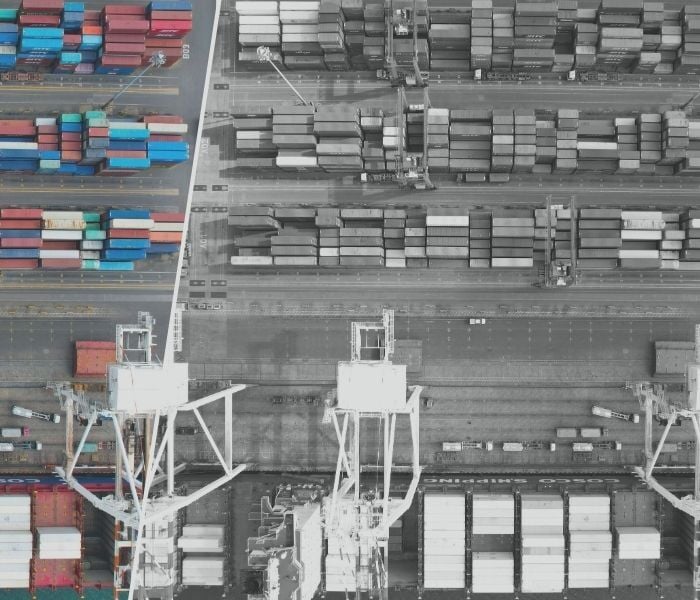Why Small Businesses Need the Temporary Foreign Worker Program
The Temporary Foreign Worker Program (TFWP) has long been a contentious public policy issue in Canada. Over the last three decades, it has drawn intense scrutiny and, at times, harsh rhetoric. The debate also tends to be cyclical in politics, when unemployment rises, calls to restrict or abolish the program surface, and when labour shortages peak, pressure builds to expand it.
At CFIB, we believe it is essential to set the record straight: while the program is not perfect, it remains an important part of addressing the shortage of labour facing many areas and sectors of the economy.
TFW Program Myths
It’s important to separate fact from fiction. Read some common misconceptions about the TFWP and the realities behind them.
❌ Myth: Canadian businesses are “addicted” to hiring temporary foreign workers (TFWs).
✔ Reality: Small business owners hire temporary foreign workers out of necessity, not convenience.
❌ Myth: Canadian businesses are “addicted” to hiring temporary foreign workers (TFWs)
✔ Reality: Small business owners hire temporary foreign workers out of necessity, not convenience.
- Foreign workers admitted under the TFWP represent less than 1% of Canada’s labour force.
- Employers want to hire locally and would happily do so if enough qualified workers were available. Lack of skilled labour is the second highest constraint on business sales and growth (42%).
❌ Myth: Temporary foreign workers are stealing Canadian jobs.
✔ Reality: Temporary foreign workers complement Canadian labour, filling critical labour gaps.
❌ Myth: Temporary foreign workers are stealing Canadian jobs
✔ Reality: Temporary foreign workers complement Canadian labour, filling critical labour gaps.
- To receive a positive LMIA, an employer must demonstrate that no qualified Canadian is available to do the job.
- With new TFWP restrictions, about 1 in 5 businesses using the TFWP said they would very likely close, while 24% would reduce hours of operation, and 52% would be unable to fill orders or deliver services. This reduction in service and production levels could result in job losses for Canadians.
❌ Myth: Foreign workers are cheap labour. They are not paid sufficient wages or keep wages low.
✔ Reality: Hiring a TFW is costly. Wages offered to TFWs are comparable to Canadians’ wages.
❌ Myth: Foreign workers are cheap labour. They are not paid sufficient wages or keep wages low.
✔ Reality: Hiring a TFW is costly. Wages offered to TFWs are comparable to Canadians’ wages.
- Employers can pay thousands of dollars in processing and recruiting fees, health insurance, housing, and travel.
- ESDC’s evaluation of the TFWP found no evidence of wage suppression at the national level as 85% of TFWs are paid the same wage as Canadians and only 3.5% are paid less.
❌ Myth: Temporary foreign workers draw on key services.
✔ Reality: TFWs help ensure Canadians have access to key goods and services.
❌ Myth: Temporary foreign workers draw on key services
✔ Reality: TFWs help ensure Canadians have access to key goods and services.
- TFWs allowed 76% of SMEs that use the program to meet demand for products and services, which helps keep Canada competitive in a tight economy.
- TFWs help build homes and put food on the table. They provide care for our children and the elderly. They are contributors to the Canadian economy and community well-being.
❌ Myth: The Temporary Foreign Worker Program facilitates the abuse of workers.
✔ Reality: The vast majority of employers treat their employees well and the TFWP has strong mechanisms to deter and penalize non-compliance.
❌ Myth: The Temporary Foreign Worker Program facilitates the abuse of workers
✔ Reality: The vast majority of employers treat their employees well and the TFWP has strong mechanisms to deter and penalize non-compliance.
- Canada’s labour code and the TFWP’s Employer Compliance Regime protects the health, safety, and rights of TFWs, with strong backing from employers.
- 90% of employers were compliant with the TFWP requirements in 2024-2025.
Why do some small businesses rely on the TFWP?
- Labour shortages are very real, including for entry level workers. Many employers simply cannot find enough workers locally. This is especially true in rural, remote, resource and resort communities. The labour pool isn’t there, regardless of wages.
- Not every job gets applicants. Certain sectors, occupations and shifts struggle to attract Canadian workers, even at higher pay. Small businesses often turn to the TFWP as a last resort, when local recruitment fails.
- Hiring a temporary foreign worker (TFW) is costly and complex. To employ even one entry-level TFW, businesses have reported paying around $10,000 in fees and permits, outside agencies or consultants, return airfare to the worker’s home country, health insurance and more. Hiring locally is always faster and cheaper, if workers are available.
Facts about the TFWP
- The TFWP is one of the smallest of Canada’s immigration and international labour programs. There are far greater numbers in the permanent resident, refugee, international mobility and international student programs.
- TFWP TFWs represent under 1% of the Canadian workforce.
- There were significant new restrictions put in place in the fall of 2024. For example, with limited exceptions:
- No employer can hire lower wage TFWs (e.g., most restaurant workers) in census metropolitan areas unless local unemployment is under 6%.
- Low wage TFWs can only represent 10% of an employer's workforce.
- The government sets the wage rates and ensures that wages are at or above the prevailing (median) wage for that occupation in the region.
- Employers must pay an average of $10,000 in fees, permits and other costs to bring in even one lower skilled TFW. Some must even pay return airfare and assist with housing.
- Many employers report that their TFWs are their most expensive workers.
- Most often, TFWs fill positions that Canadians don’t want or cannot take. These include night shifts, labour intensive or outdoor work, or work in remote communities.
CFIB’s Position
CFIB members have consistently supported limited, responsible use of the TFWP to fill persistent labour gaps. Through surveys, thousands of small employers have shared that this program is sometimes the only tool that allows them to keep their doors open, especially in communities where there simply are not enough Canadian workers.
We agree that the program should be carefully managed and adjusted based on economic conditions. But calls to abolish the program outright are misguided and would severely harm small businesses across the country.
CFIB’s Advocacy
CFIB has a long history of working with governments to improve the TFWP and make it more workable for small firms. We have also consistently supported putting TFWs on a pathway to permanent residence after 1-2 years of work with an employer. More CFIB advocacy efforts:
- Joint submission with the Quebec Federation of Municipalities calling for a fair and flexible TFWP design
- Immigration Levels Plan submission
- Research: TFW Myths vs Realities
A Balanced Approach
The TFWP is far from a first choice for small business owners. It is expensive, heavily regulated, and politically sensitive. But for many employers, particularly those requiring manual labour, or in rural and specialized sectors, it is the only choice to meet staffing needs, serve customers, and remain open.
Canada’s small businesses need a TFWP that is fair, flexible, and functional. Instead of tearing the program down, we should work together to reform it in ways that protect workers, meet local labour market needs, and give small business owners a fighting chance to succeed.
For more information, check out these resources:
Be part of the largest small business organization in Canada.
Join more than 100,000 successful independent businesses who benefit from personalized advice, exclusive savings and a strong voice in government.












